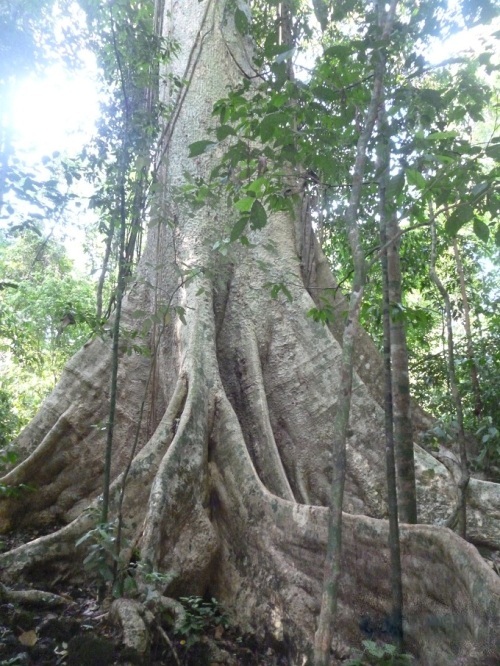
Coming to this place, tourists can explore the pristine forest, organize picnics, go camping or admire the majestic beauty of ancient cedars. They can also row boats to see crocodiles in the lagoon or enjoy the poetic scenery.
The Bau Sau wetland ecosystem stretches over 13.759ha, out of which 151ha is frequently flooded, 5.360ha is seasonally flooded. The Bau Sau wetland system was recognized as being among the network of Ramsar sites of international importance on in 2005.
The Bau Sau wetland ecosystem has an important role in the maintenance and conservation of biodiversity in the region as well as the social and economic life of communities around the Dong Nai River Basin, especially in controlling flooding.
It is important in terms of ecology, environment, biodiversity, and economic-social life: to regulate the water source for 15 million people living downstream of the Dong Nai River and around the park, and to provide water to the Tri An hydro-electric power lake. It is important also in terms of scientific research, landscape, education and tourism.
Bau Sau is the home of the species of freshwater crocodile known as the Siamese crocodile, once thought to be extinct.
To get to Bau Sau, travel 9km by car or motorbike from the administrative center of Cat Tien National Park and walk more than 5km through the forest.
Bau Sau is in the core area of Cat Tien National Park, and is under the direct management of the Bau Sau ranger station. Reportedly, the name of Bau Sau was known before the Cat Tien National Park was established. Bau Sau is the largest wetlands in the Cat Tien National Park, with more than 2,500 hectares during the rainy season. But in summer, the wetland area only spans 100-150 hectares.
Bau Sau is not only home to crocodiles but also many plant and animal species listed in the Red Book of Vietnam and the world. Like other endemic regions of the Cat Tien National Park, Bau Sau is strictly managed and monitored.

What makes the difference for Bau Sau is the plethora of crocodiles. Crocodiles are everywhere in Bau Sau, which threatens many plant and animal species living in the area. In Bau Sau, crocodiles are the masters.
Why do crocodiles live in Bau Sau? It is the mystery of the wetlands.
Freshwater crocodiles were once brought to near extinction here due to attacks from humans. Thanks to a project to preserve this species within the national park, it is being revived.
The park brought the freshwater crocodiles from other regions to release into Bau Sau. So far, 60 freshwater crocodiles have been released in Bau Sau on five occasions, after their DNA was tested. More than 10 years ago, the crocodiles recovered their natural instincts of hunting and brooding.
Here are the experiences that visitors enjoy once setting foot on this land of primeval forests:
5km trekking through the forest

A giant cedar
Bau Sau is 15 km from Nam Cat Tien center. Visitors must ride 10 miles of forest roads and then walk 5 km further along the wet trail leading deep into the forest.
The trail is very narrow with large and small limestone slabs covered with green moss and leaves. Visitors can walk and experience the forest road and have the opportunity to explore the flora and fauna biodiversity of this primitive forest.
On the road, they will see a giant cedar with a huge trunk that would require 15 people to hug. The tree roots stretch out over a vast area of tens of meters.
Bau Sau panorama
For a panoramic view of Bau Sau area, visitors should watch it from the House of Forest Rangers. From here they will see the primeval forests, the marshes and colorful butterflies.
Rowing to watch the kingdom of crocodiles
Rowing on the lagoon to see crocodiles swimming leisurely is one of the most exciting feelings that tourists can enjoy here. A small boat can carry a maximum of three people. The boat operator takes visitors through the swamp, approaching the primeval forest.
Vietnam currently has six Ramsar sites, including Xuan Thuy National Park (Nam Dinh province), Bau Sau, Cat Tien National Park (Dong Nai province), Ba Be Lake (Bac Kan), Tram Chim National Park (Dong Thap province), Mui Ca Mau National Park (Ca Mau), and Con Dao National Park (Ba Ria - Vung Tau).
The Ramsar Convention is an international treaty for the conservation of wetlands, and their reasonable and appropriate use. It has the aim of preventing the increasing encroachment of human development on wetlands as well as preventing the loss of wetlands now and in the future, recognizing the ecological functions of wetlands and their values to recreation, science, culture and economics.






- Hanoi received 16.44 million visits in seven months
- Two destinations in Vietnam top of the list for Korean tourists
- Hanoi tourism posts impressive first-half growth
- Hanoi looks for ways to attract longer-stay visitors
- Hanoi named among best places to visit in summer
- Vietnamese women’s friendliness amazed Canadian photographer
